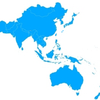Southeast Asia (SEA) is on the cusp of a consumer revolution. Within the next decade, the region will welcome one billion new entrants to the monied classes.
However, amid a tightening global economy, all is not rosy. With a potential recession looming, SEA brands are increasingly feeling the pinch, especially as costs rise, budgets shrink and talent remains elusive.
Meeting these challenges head-on is critical. Brands need to act fast and implement business sustainability plans, including reducing marketing costs and stimulating capital-efficient growth.
Here are seven tenets to achieving this:
1) Driving High Lifetime value
Sustainable growth starts and ends with customers who are deeply affiliated with your brand. These customers have a high lifetime value (LTV), a strong brand affinity and are more likely to happily recommend your brand to others.
Creating a large pool of high LTV customers requires building and nurturing deep connections over a long period of time. Personalized content is one effective way of deepening these relationships, especially in SEA.
2) Be aware of your customer
Brands must always take into account their customers’ attributes, actions and pain points in order to ensure customers are well-informed and receiving a valuable service. Improved customer service is said to increase sales revenue by up to 7%. Delivering a one-on-one service not only improves retention and loyalty but also drives discovery across newer customer segments.
3) Satisfaction trumps all
Customer retention is cheaper than acquisition. Indeed, acquiring new customers can be five times more expensive than retaining existing ones. Meanwhile, a 2% increase in customer retention can reduce an organization’s costs by 10%. These cost benefits depict why organizations need to prioritize the customer experience and enhance the sense of satisfaction they provide consumers. Likewise, the symbiotic relationship between retaining and satisfying customers is evident, as better retention can lead to improved loyalty and vice versa. As such, brands must double down on customer satisfaction should they wish to cement long-term loyalty in their existing and new customers.
4) Feedback and expectations
In what may come as surprising to many marketers, there is often a high gap between how brands perceive themselves and their solutions and how the consumers see them. A staggering 80% of brands believe that they provide a superior value-add than their competitors, while only 8% of consumers agreed with the brands. Brands can avoid this gap in expectations by regularly conducting audience feedback surveys and running regular net promoter score (NPS) checks.
5) Craft a retainer model
All business leaders know that analyzing sales conversion rates and predicting incoming revenue is critical for long-term planning. This necessitates a strong pipeline of recurring revenue, which can be achieved through loyalty subscriptions or retainer models. Pivoting to a subscription-led service builds both sales, loyalty and peace of mind for business leaders. On average, more than two-thirds of revenue is generated by existing customers than new ones.
6) An agile culture
In the era when consumer preferences are ever-changing, business culture needs to be agile and adaptive to rapid change. Through this, teams are able to cater to regularly changing consumer needs and market demands while adding more value to their existing customer base.
7) Sales and marketing alignment
It should be pretty obvious that sales and marketing teams work best when together. However, in many organizations today, they have juxtaposing objectives. For sustainable growth though, sales-marketing alignment is crucial, as they are more likely to have a better understanding of their customers than siloed teams. As such, they are better able to maximize upsells and cross-sells.
Collaborative marketing teams can also create more personalized campaigns, thus generating more qualified leads which can be turned into opportunities by the sales team.
As marketing technology advances, SEA marketers have more tools at their disposal to assist in the development of long-term business strategies and customer relationships. Despite being well-positioned to capitalize on the region’s burgeoning middle-class population, marketers must maintain a long-term mindset amid increased competition and greater investor scrutiny. Understanding how business decisions factor into customer needs and demands is paramount to achieving this goal.
Leveraging the listed strategies will not only allow marketers to develop sustainable brand and business strategies but will also help them be far ahead of the growth curve in an emerging region.
Authored by Saurabh Madan, General Manager, SEA and ANZ, MoEngage
























